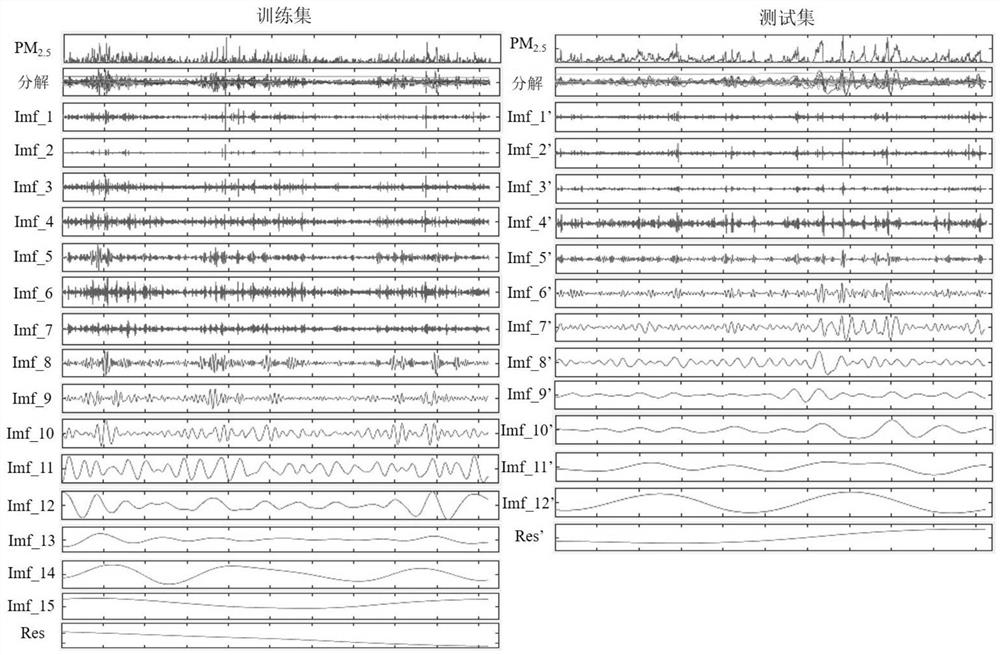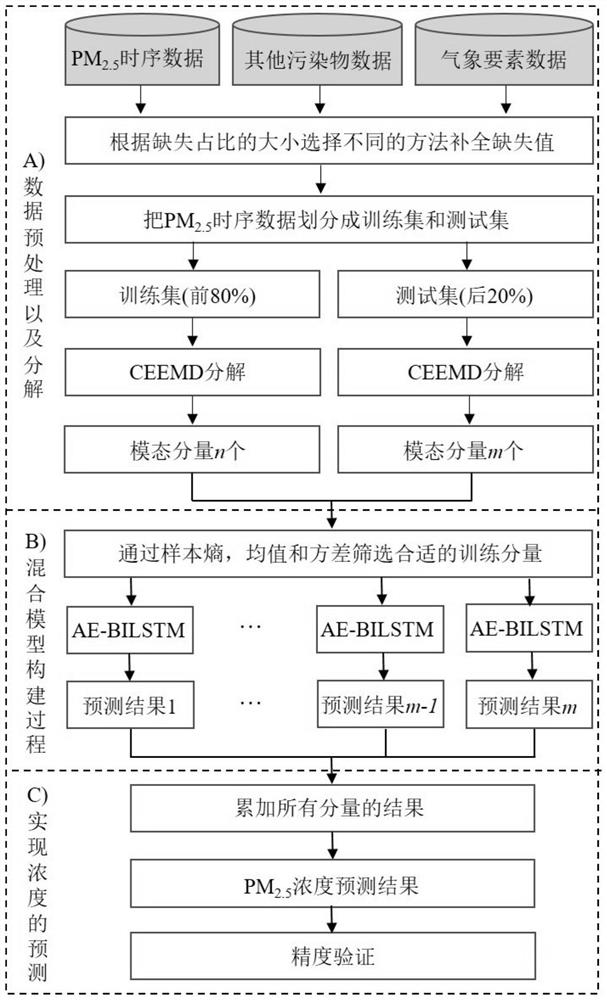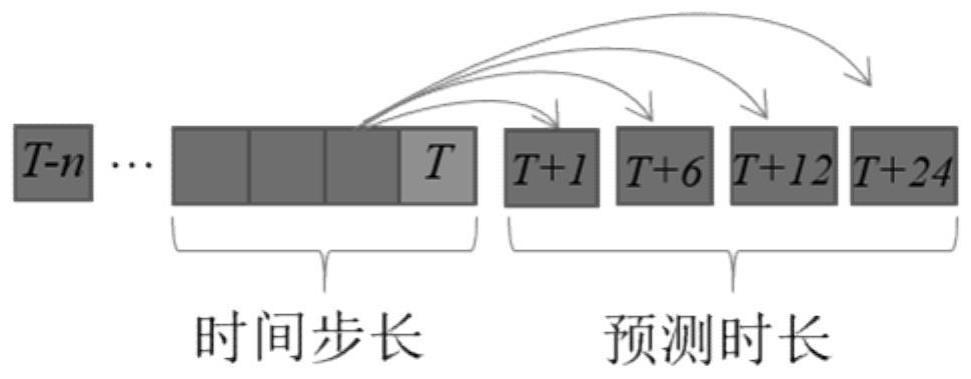Method for predicting 24-hour PM2.5 concentration based on deep neural network
A deep neural network, 24-hour technology, applied in neural learning methods, biological neural network models, neural architectures, etc., can solve problems such as large long-term concentration prediction errors, overcome modal aliasing, suppress noise interference, and improve models. performance effect
- Summary
- Abstract
- Description
- Claims
- Application Information
AI Technical Summary
Problems solved by technology
Method used
Image
Examples
specific Embodiment
[0047] 1. Implementation goals
[0048] In order to realize the ground detection station PM 2.5 Take the short-term and long-term concentration prediction of concentration as an example. At present, many methods are difficult to achieve short-term accurate prediction and long-term accurate simulation. Therefore, the present invention proposes a mixed prediction model for PM 2.5 For better prediction of future concentrations, PM at ground monitoring stations in Beijing 2.5 concentration data as an example.
[0049] 2. Data selection
[0050] Pollutant ground monitoring stations provide hourly concentrations of six air pollutants, and NOAA weather stations can provide hourly hourly measurements of four meteorological parameters on the ground. Pollutant data includes 6 main pollutants, namely PM 10 , PM 2.5 , SO 2 , NO 2 , CO, O 3 , meteorological parameters include four kinds of PM 2.5 The species that have a greater impact on concentration are temperature T, dew point ...
PUM
 Login to View More
Login to View More Abstract
Description
Claims
Application Information
 Login to View More
Login to View More - R&D
- Intellectual Property
- Life Sciences
- Materials
- Tech Scout
- Unparalleled Data Quality
- Higher Quality Content
- 60% Fewer Hallucinations
Browse by: Latest US Patents, China's latest patents, Technical Efficacy Thesaurus, Application Domain, Technology Topic, Popular Technical Reports.
© 2025 PatSnap. All rights reserved.Legal|Privacy policy|Modern Slavery Act Transparency Statement|Sitemap|About US| Contact US: help@patsnap.com



